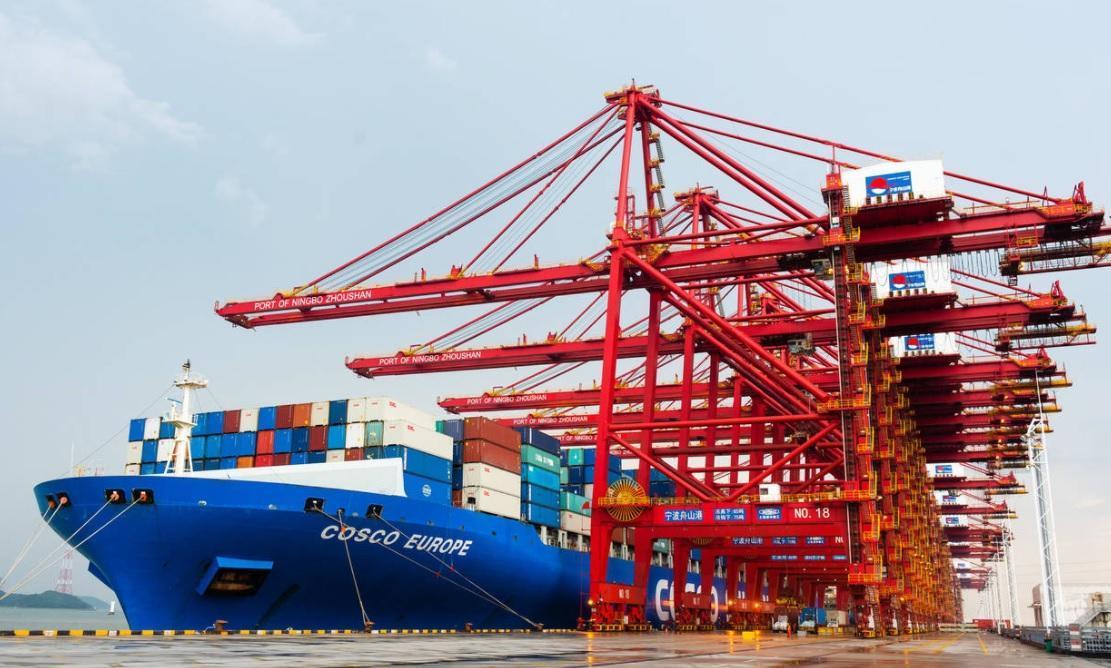
Alamy Photo
China reopened a key terminal at the world’s third-busiest cargo port on Aug. 25, after a shutdown to control the coronavirus caused major backlogs elsewhere and worsened export already extended delays caused by the pandemic.
The halt at the eastern Ningbo-Zhoushan port started two weeks ago, when a worker at its Meishan terminal tested positive for the disease.
The terminal handles a fifth of the container volume at Ningbo-Zhoushan and the hold-up forced ships to other Chinese ports, which were left facing their worst levels of congestion in seven years, reported Chinese media outlet Caixin this week.
The closure added stress to an already stretched global shipping network, with soaring demand for goods from Western consumers in the pandemic piling pressure on Chinese exporters who face strict domestic virus controls.
The Ningbo-Zhoushan port handled almost 1.2 billion tons of goods in 2020.
But Ningbo authorities said late Tuesday that restrictions will be lifted from Aug. 25 morning.
"All units in the zone must comprehensively do a good job in epidemic prevention and control, as well as resumption of work and production," said a notice republished by state broadcaster CCTV.
Businesses should also prioritize the loading and unloading of stranded trucks, the notice added.
Chinese port workers are routinely tested for COVID-19, and the affected worker had been fully vaccinated.
It remains unclear how the member of staff contracted the virus.
The port disruption followed the closure of the Yantian port in southern trade hub Shenzhen in May after an outbreak involving port workers.
China has been battling a resurgence of COVID-19 in recent weeks caused by the highly infectious Delta variant, but strict lockdowns and mass testing has helped push new case numbers back down.
In the meantime, Japan moved on Aug. 25 to expand a virus state of emergency to eight more regions, a day after the Paralympic opening ceremony, as rising infections put hospitals under pressure.
The step comes with summer school holidays ending and top infection experts suggesting delaying the start of classes to reduce infection risks.
The country has been recording more than 20,000 new infections a day in recent weeks, and in urban areas like Tokyo patients in serious condition have been left waiting for hours or travelling long distances in ambulances to find available hospital beds.
Government spokesman Katsunobu Kato said a panel of experts had approved a plan to place eight more regions under the emergency already in place in 13 areas including Tokyo.
The decision is expected to become official later in the day, when Prime Minister Yoshihide Suga convenes a special meeting of ministers.
The measure largely limits the sale of alcohol by restaurants and bars and asks them to close early, while urging the public to work from home and avoid non-urgent outings.
"This puts further burden on the Japanese people, but we ask for their continued efforts to prevent infections," Kato told a regular briefing.
The government also plans to bring four other regions under a less strict measure that already affects eight regions.
In all, the planned move will mean 33 of Japan's 47 regions are under heightened anti-infection rules as the country hosts the Paralympics after the Olympics.
Organizers say their countermeasures have stopped infection spreading from participants to the Japanese public but some experts argue holding the events has undermined government messaging on the virus and encouraged people to go out.
A top adviser to the government on the virus told lawmakers Wednesday that municipalities should be able to consider extending the summer vacation for school children to prevent infections.
The government has so far ruled out blanket school closures, and is proceeding with a vaccination programme that began slowly but has picked up speed, with around 40 percent of the population now fully inoculated. So far Japan has recorded around 15,500 deaths in the pandemic.